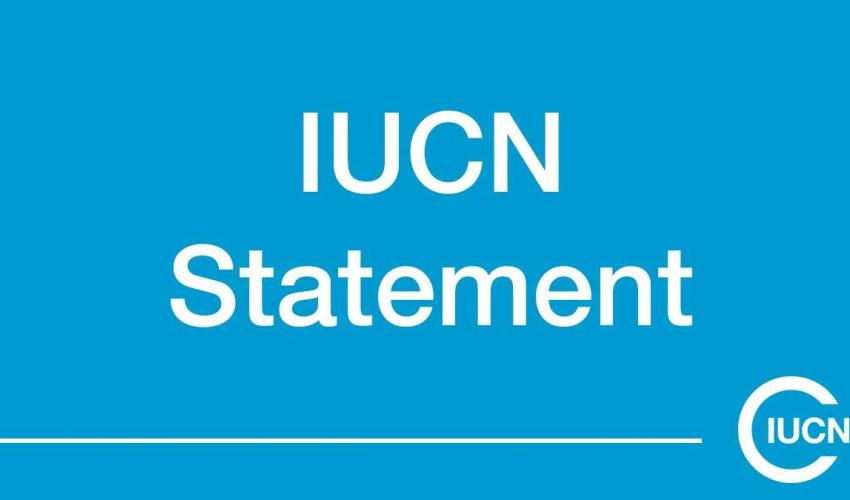Interview with Aroha Te Pareake Mead, IUCN Commission on Environmental, Economic and Social Policy
This interview originally appeared on World Heritage, the official UNESCO publication from the World Heritage Centre, as part of a special edition on the IUCN World Conservation Congress. Aroha Te Pareake Mead is from the Ngati Awa and Ngati Porou Maori tribes of Aotearoa/New Zealand. She is a researcher and scholar best known for her work on indigenous cultural and intellectual property and environmental issues, and brings significant expertise and experience to the role of Chair of the IUCN Commission on Environmental, Economic and Social Policy (CEESP).

Photo: Aroha Te Pareake Mead
The World Heritage Convention is the only international legal instrument that explicitly links humans and nature. In your eyes, why it is important to consider culture and nature together?
Aroha Mead (AM): Because many of the areas that have been considered, or have already been included on the World Heritage List, have been able to be preserved because of their link with culture. Culture does not exist by itself; it is a body of knowledge and practices of the peoples, of the communities who are living there and who are taking care of the spaces, whether buildings or natural areas. They are keeping the traditions alive but also taking care of the environment.
Is the CEESP involved in IUCN’s advisory role under the World Heritage Convention? And if so, what kind of expertise does it bring?
AM: Within the CEESP we have a dedicated team of experts from all around the world who assist in the technical reviews of any of the nominations, but also reviews of the conservation of a World Heritage site. This is actually one of the more exciting aspects of the commission’s work, where a lot of people are very eager to participate because they believe strongly in keeping the integrity of World Heritage sites that have these dual natural and cultural components.
In your opinion, can the IUCN World Conservation Congress influence the way in which the World Heritage Convention is implemented, or World Heritage processes in the future?
AM: I will respond to that in two ways. In general, one of the most powerful achievements of the Congress is that it brings together this critical mass of people from all over the world, in their thousands, and shows the absolute commitment and dedication of a number of people in many organizations and many governments who are committed to the same vision as IUCN: a just world that values and conserves nature. This in itself is a contribution because it reinforces the message of the right thing to do, and there is a lot of support. But in a more substantial, technical way, the Congress can certainly progress the World Heritage Convention through resolutions – the mechanism with which IUCN members influence its programme, through workshops, and through the experts who come to speak and share experience of this area of work. So I see the Congress as important in the overall implementation of the Convention. It is one contribution, but because it comes from governments as well as NGOs, and indigenous and local communities, it is a particularly powerful contribution.
Where are the opportunities for engaging indigenous peoples’ cultures in the way World Heritage sites are managed, particularly natural sites?
AM: It would be fair to say that this area needs more dedicated time and focus. Site management is one of the weak links of the implementation of the World Heritage Convention at this stage, and a number of reports authored by indigenous representatives as well as by NGOs have pointed out some gaps in outreach to indigenous and local communities to assist in the management of their own areas. So, it is certainly a priority for CEESP to try to get some traction to work with indigenous and local communities. But this requires the Convention itself and the World Heritage Committee to open up their processes more, to provide stronger guidelines for implementation at the national and site levels, stressing that this is an important value that should not be seen as optional – it should be seen as best practice.
How do you see IUCN’s role as an organization in ensuring indigenous peoples’ rights are better respected, and nature conservation in general?
AM: IUCN has gone a long way in the last decade towards promoting the realization of indigenous rights in conservation policy, and we have done that through quite specific actions as well as through dialogue. In specific ways, we have been able to use the IUCN policy process to put in place indigenous community-conserved areas, which is a great innovation. IUCN members have adopted resolutions on the implementation of the 2007 UN Declaration on the Rights of Indigenous Peoples (UNDRIP). We have been asking IUCN members to implement the Declaration, but there is also a programme within IUCN to see how we are implementing it ourselves. We have developed a rights-based approach to conservation which has been widely promoted through all thematic areas of work within IUCN, and through its six expert commissions. The opportunity is there for indigenous peoples and local communities to become directly involved on a day-to-day basis in the work of the commissions and to make contributions to IUCN policy.
We also have an initiative called the Whakatane Mechanism, which is a specific conflict resolution mechanism to assist in those spaces where there is conflict between indigenous peoples and others, which might be government but could be NGOs as well; and we use the convening role of IUCN to bring all the parties together in a neutral and facilitated space to work through some of these issues. This has proved to be really effective for indigenous peoples because they often cannot access park managers or government agencies responsible for policy, and having this external independent mechanism is very successful. So I think we have a lot to do, and we can always do more.



